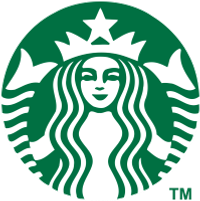
Starbucks Corp
NASDAQ:SBUX
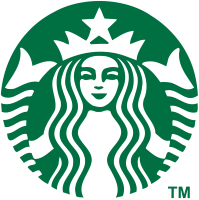

| US |

|
Johnson & Johnson
NYSE:JNJ
|
Pharmaceuticals
|
| US |

|
Berkshire Hathaway Inc
NYSE:BRK.A
|
Financial Services
|
| US |

|
Bank of America Corp
NYSE:BAC
|
Banking
|
| US |

|
Mastercard Inc
NYSE:MA
|
Technology
|
| US |
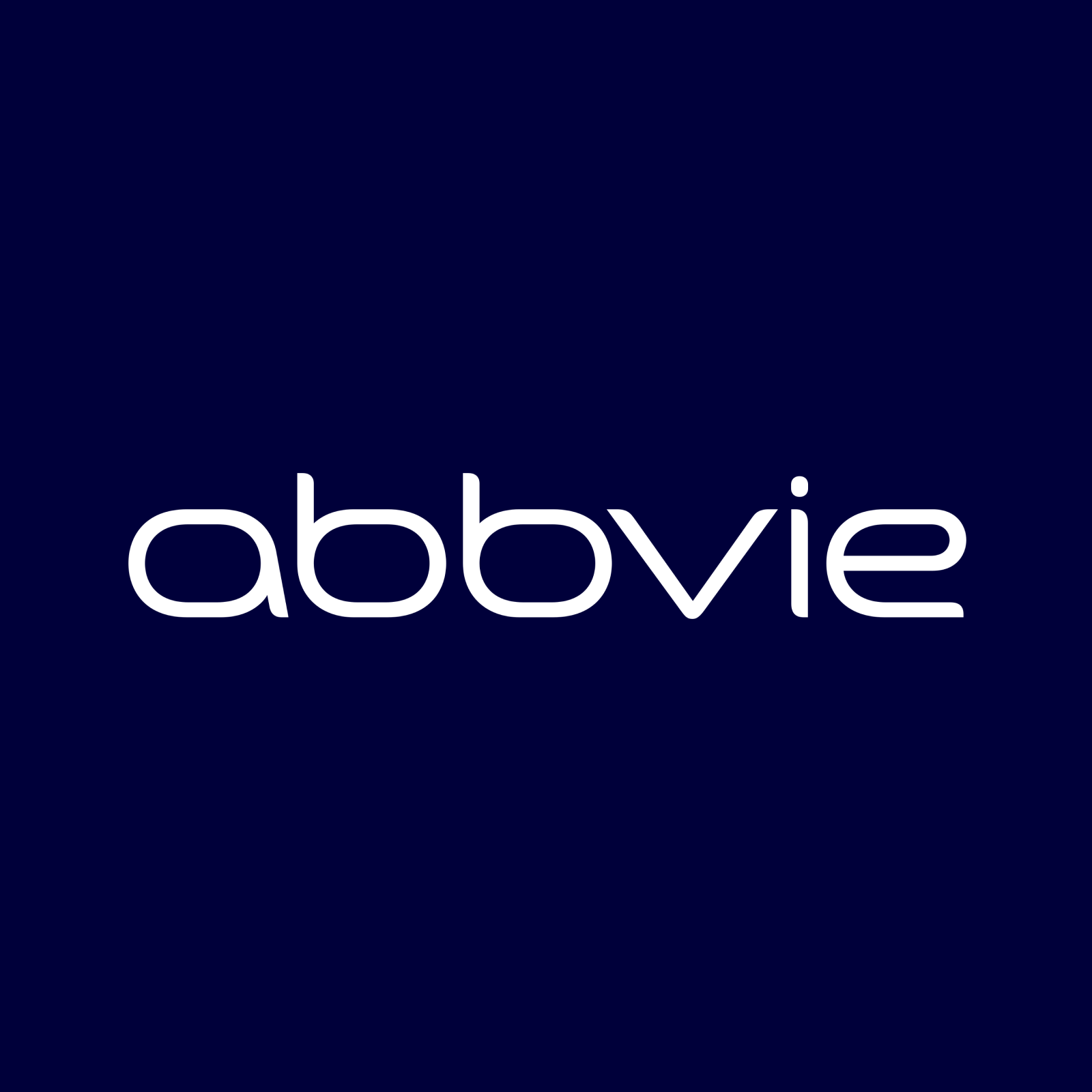
|
Abbvie Inc
NYSE:ABBV
|
Biotechnology
|
| US |

|
Pfizer Inc
NYSE:PFE
|
Pharmaceuticals
|
| US |

|
Palantir Technologies Inc
NYSE:PLTR
|
Technology
|
| US |

|
Nike Inc
NYSE:NKE
|
Textiles, Apparel & Luxury Goods
|
| US |

|
Visa Inc
NYSE:V
|
Technology
|
| CN |

|
Alibaba Group Holding Ltd
NYSE:BABA
|
Retail
|
| US |

|
3M Co
NYSE:MMM
|
Industrial Conglomerates
|
| US |

|
JPMorgan Chase & Co
NYSE:JPM
|
Banking
|
| US |

|
Coca-Cola Co
NYSE:KO
|
Beverages
|
| US |

|
Realty Income Corp
NYSE:O
|
Real Estate
|
| US |

|
Walt Disney Co
NYSE:DIS
|
Media
|
| US |

|
PayPal Holdings Inc
NASDAQ:PYPL
|
Technology
|
Utilize notes to systematically review your investment decisions. By reflecting on past outcomes, you can discern effective strategies and identify those that underperformed. This continuous feedback loop enables you to adapt and refine your approach, optimizing for future success.
Each note serves as a learning point, offering insights into your decision-making processes. Over time, you'll accumulate a personalized database of knowledge, enhancing your ability to make informed decisions quickly and effectively.
With a comprehensive record of your investment history at your fingertips, you can compare current opportunities against past experiences. This not only bolsters your confidence but also ensures that each decision is grounded in a well-documented rationale.
Do you really want to delete this note?
This action cannot be undone.

| 52 Week Range |
72.5
107.21
|
| Price Target |
|
We'll email you a reminder when the closing price reaches USD.
Choose the stock you wish to monitor with a price alert.

|
Johnson & Johnson
NYSE:JNJ
|
US |

|
Berkshire Hathaway Inc
NYSE:BRK.A
|
US |

|
Bank of America Corp
NYSE:BAC
|
US |

|
Mastercard Inc
NYSE:MA
|
US |

|
Abbvie Inc
NYSE:ABBV
|
US |

|
Pfizer Inc
NYSE:PFE
|
US |

|
Palantir Technologies Inc
NYSE:PLTR
|
US |

|
Nike Inc
NYSE:NKE
|
US |

|
Visa Inc
NYSE:V
|
US |

|
Alibaba Group Holding Ltd
NYSE:BABA
|
CN |

|
3M Co
NYSE:MMM
|
US |

|
JPMorgan Chase & Co
NYSE:JPM
|
US |

|
Coca-Cola Co
NYSE:KO
|
US |

|
Realty Income Corp
NYSE:O
|
US |

|
Walt Disney Co
NYSE:DIS
|
US |

|
PayPal Holdings Inc
NASDAQ:PYPL
|
US |
This alert will be permanently deleted.
 Starbucks Corp
Starbucks Corp


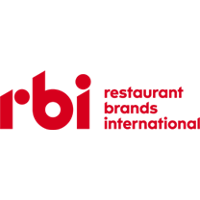
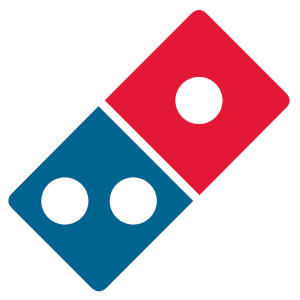
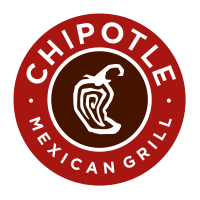
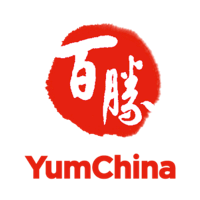

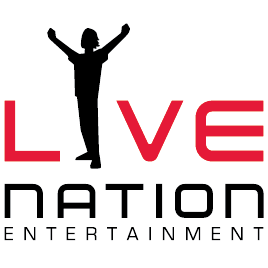
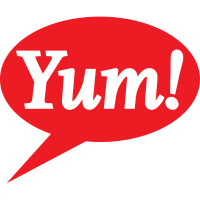
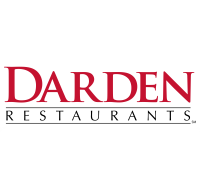


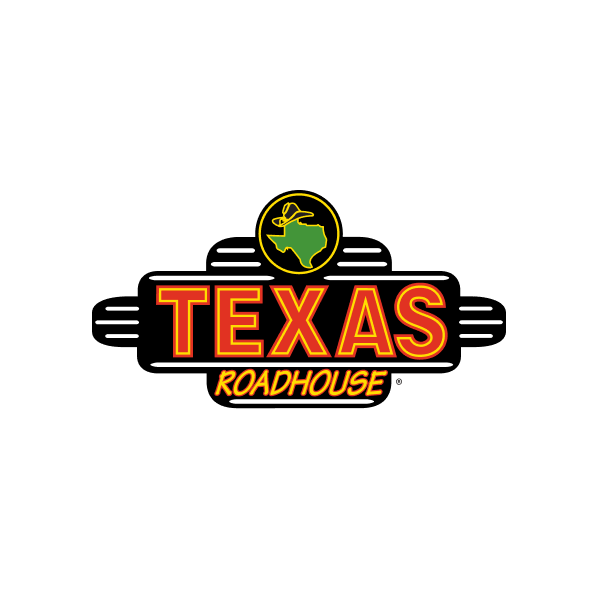


 You don't have any saved screeners yet
You don't have any saved screeners yet

Good afternoon, my name is Devin, and I will be your conference operator today. I would like to welcome everyone to Starbucks Coffee Company’s Fourth Quarter and Fiscal Year 2020 Conference Call. [Operator Instructions]
I would like to turn the call over now to Durga Doraisamy, Vice President of Investor Relations. Ms. Doraisamy, you may now begin the conference.
Good afternoon, everyone and thank you for joining us today to discuss our fourth quarter and fiscal year 2020 results. Today’s discussion will be led by Kevin Johnson, President and CEO; and Pat Grismer, CFO. And for Q&A, we will be joined by Roz Brewer, Chief Operating Officer and Group President, Americas; John Culver, Group President, International, Channel Development and Global Coffee, Tea & Cocoa.
This conference call will include forward-looking statements, which are subject to various risks and uncertainties that could cause our actual results to differ materially from these statements. Any such statements should be considered in conjunction with cautionary statements in our earnings release and risk factor discussions in our filings with the SEC, including our last annual report on Form 10-K and quarterly report on Form 10-Q.
In addition, we estimate the impact of COVID-19 by comparing actual results to our previous forecast. These forecasts were created prior to the spread of the virus were based on information available at the time and on a variety of assumptions, which we believe were reasonable. Starbucks assumes no obligation to update any of these forward-looking statements or information.
GAAP results in fiscal 2020 include several items related to strategic actions including restructuring and impairment charges, transaction and integration costs and other items. These items are excluded from our non-GAAP results. For certain non-GAAP financial measures mentioned in today’s call, please refer to our website at investor.starbucks.com to find the corresponding GAAP measures as well as a reconciliation of these non-GAAP financial measures with their corresponding GAAP measures.
This conference call is being webcast and an archive of the webcast will be available on our website through Friday, November 27, 2020.
I will now turn the call over to Kevin. Kevin?
Good afternoon and thank you for joining us today. 2020 has been an extraordinary year. As together, everyone on this planet has been navigating a global pandemic and all of the implications that come along with it. This shared experience gives us much to reflect upon, learn from and be inspired by. I’m very proud of how Starbucks partners responded, pulling together to support one another, creating safe that familiar experiences for our customers and serving communities.
Starbucks partners who probably wear the green apron have been at the forefront of these efforts and I am enormously grateful for the courage, compassion and dedication that they’ve shown throughout this churn. They inspire me and fuel my positive outlook for the future.
There are three words that I hope you take away from today’s call, confidence, resilience and optimism. Let me explain. First, in the most dynamic of times, Starbucks is consistently executing. Our recovery is progressing extremely well as evidenced by better-than-expected sales and profits in the fourth quarter which gives us great confidence going forward.
Second, we have accelerated several growth strategies and are innovating rapidly to adapt to new customer behaviors and preferences building a new level of resilience for the future. And third, Starbucks partners have risen to the occasion which coupled with an innovation agenda that elevates the customer experience, introduces exciting new beverages and extends our digital customer relationships, leaves us very well positioned, and gives me a tremendous sense of optimism for fiscal ’21 and the future of the Starbucks Coffee Company.
In these unprecedented times, Starbucks is more focused than ever on making the investments necessary to position our brand and our Company our long-term success. We will maintain our disciplined approach to investing behind our best-in-class digital ecosystem and aligning our product portfolio store base and partner-led customer experience with evolving preferences and consumption patterns. Our track record of delivering across these areas underpins the resilience of our business during this pandemic and will support Starbucks continued leadership.
Let me begin in the U.S. I could not be more pleased with our U.S. sales recovery which progress faster than we anticipated in our final quarter of fiscal 2020. We finished the quarter with the comparable store sales decline of 4% for the month of September, a vast improvement from the approximately 65% decline we experienced at the depth of the pandemic only five months ago.
Fourth quarter comparable store sales declined 9% in the U.S. relative to the same quarter in the prior year well above the better end of our guidance range. Importantly, transaction volumes in the U.S. climbed steadily throughout the quarter as we methodically and carefully restored in-store seating with approximately 63% of our U.S. stores offering limited seating as we exited the quarter.
Ticket growth was relatively stable across the quarter at approximately 20% remaining meaningfully above historical levels aided by continued strength in our drive-through channel where customers tend to place larger orders. Central to the strength of our U.S. recovery has been a relentless focus on rapid innovation, adapting and adjusting to new customer behaviors while continuing to drive the three strategies that are fundamental to our Growth at Scale agenda, elevating the customer experience, driving relevant beverage innovation and expanding digital customer engagement.
The first pillar of our Growth at Scale strategy, customer experience is a key competitive differentiator for Starbucks and something that is paying dividends as customers now more than ever are seeking the comfort and care that Starbucks uniquely provides. As customers continue to adapt to work from home and study from home realities, they create safe, familiar and convenient experiences, and have shifted their buying behavior accordingly. And we’ve adapted rapidly to meet those evolving needs. Broadly speaking we’ve seen U.S. transactions migrate from dense metro centers to the suburbs, from cafes to drive-throughs, from early mornings to mid mornings with outpaced recovery on the weekends.
We’ve adjusted our operations to match these new customer behavior patterns including multiple, new protocols to provide a safe experience for our partners and customers. And this has resulted in customer connection scores, which are well above prior year levels.
By caring for our partners since the start of this pandemic, providing them with economic certainty at a time of great vulnerability, we successfully maintained very high levels of partner engagement and this is paying off in the form of high quality customer experiences. Those best moment that inspired Starbucks customers to continue coming back.
As evidence of these traffic shifts, U.S. sales comps were solidly positive for our drive-through locations and suburban stores for the fourth quarter and the month of September, respectively. Although this was offset by negative sales comps in our debt metro stores, particularly on week days, those numbers reflect the fact that approximately 3% of our stores were temporarily closed across the entire quarter, effectively weighing down the market comp by about 2 percentage points.
To increase throughput and accommodate higher transaction volumes at our suburban locations, we’ve rolled out curbside pickup to approximately 800 U.S. company-operated locations and are on track to be a nearly 2,000 stores across the U.S. by the end of fiscal 2021.
We’ve also introduced handheld point of sale devices to about 100 stores with the goal of deploying these devices to approximately 400 additional stores by the end of Q1. And we are continuing to restore in-store seating across all of our stores in the U.S. as conditions allow. Building on the strength of our customer experience, differentiated products continue to be an important traffic driver as well encompassing seasonal favorites as well as new innovations.
The re-launch of our Pumpkin Spice platform in late August was a catalyst to our Q4 results. With Pumpkin Cream Cold Brew which was first offered last year actually outselling Pumpkin Spice Latte this season leading the entire Pumpkin platform to a record high in average daily units.
Our cold beverages continue to resonate with customers led by Starbucks Refreshers and Cold Brew with both delivered, delivering double-digit growth in Q4 and void by positive year-over-year growth in beverages. These results reflect not only the appeal of our products, but also the effectiveness of our marketing campaigns which reinforce the trust and familiarity of the Starbucks brand at a time when customers are craving our return to normalcy. And finally, as customers are increasingly seeking convenient and contactless experiences, our expanding drive-through presence and industry leading mobile platform, our primary vehicles to increasing convenience and digital customer engagement have been instrumental to the strength of our recovery.
As evidence of this, approximately 75% of U.S. sales volume in Q4 was drive-through and mobile orders. Although this was meaningfully down from 90% in Q3, reflecting a sizable shift to on-premise occasions in Q4.
As we progressively restored seating in our cafes, this is notably higher than pre-COVID levels at approximately 60% of sales. Moreover, our mobile order transactions continue to grow, increasing from 18% in Q2 to 24% in Q4 aided by continued improvements to our mobile app as well as an increased messaging across our marketing channels to drive further awareness introducing more customers to our mobile app which drove engagement to mobile order and benefited us operationally.
Of course, another key driver of increased digital customer engagement is our Starbucks Rewards program. In Q4, Starbucks Rewards drove 47% of U.S. company operated tender for a second consecutive quarter, up from 43% in our fiscal Q1 prior to the onset of COVID-19. Importantly, Starbucks Rewards contribution improved throughout the quarter and returned to pre-COVID levels mainly driven by recovery in member spend and higher mobile order and pay usage, as I outlined previously.
Additionally, our 90-day active rewards member base increased by 3 million members in Q4 approaching pre-COVID levels at $19.3 million, up 10% from the prior year. The successful launch of Stars for Everyone in mid-September was a key highlight in the quarter. The momentum we saw and the number of customers who downloaded the Starbucks app in Q3 continued throughout Q4 and the number of active customers who joined the Starbucks Rewards program grew slightly in Q4 relative to Q3, likely helped by the late quarter launch of Stars for everyone.
These early results indicate that the flexibility of rewards payment options, including the removal of the stored value card requirement to earn stars is resonating with customers. This gives us optimism regarding our ability to meaningfully grow the number of 90 day active Starbucks Rewards members in fiscal 2021.
Before moving on from our U.S. business, I’d like to remind you that as we announced in June, we are in the midst of accelerating the transformation of our dense metro business by closing lower performing stores while continuing to capture that traffic where customers need us to be, including existing drive-through stores, new formats, such as curbside and more efficient Starbucks pickup locations. We expect much of this work to be completed in the next 12 to 18 months.
At the same time, we remain focused on our strategy of developing drive-through locations largely in suburban and semi-rural locations, extending the reach of the Starbucks brand with high volume, high margin stores providing our customers the convenience they are seeking. We continue to grow our delivery business through our partnership with Uber Eats providing customers the ultimate form of convenience. I cannot be more excited about the upward trajectory and level of innovation, we’re seeing in our U.S. business.
I’ll now move on to China, our second lead growth market. Building on the positive momentum in Q3, China demonstrated sequential improvements in monthly comparable store sales across Q4 delivering minus 3% for the quarter. This was in line with our expectations led by initiatives very similar to what I described in the U.S., outstanding customer experience, new product innovation, notably, our new tea cloud platform and continued expansion of our digital platform, but what’s most remarkable about the recovery in China, in my view is the rapid reacceleration of new store development which is our number one driver of growth in China.
I’m pleased to say that despite the challenging environment imposed by the pandemic, we crossed both the 4,600 and the 4,700 store milestone in Q4, opening almost 260 stores in the fourth quarter alone. That’s an impressive 581 stores or 14% growth in the last 12 months. This is an incredible achievement by the team considering, we temporarily paused new store development activity in China for a couple of months starting in late January. Our disciplined approach to store development is paying off as these new stores are off to a strong start with early returns substantially in line with pre-COVID levels. As part of our store development program in China, the local team has innovated a new retail format that caters to the need state of convenience. Starbucks Now which is very similar to Starbucks Pickups in the U.S.
With speed and agility Starbucks China opened 40 New stores in fiscal 2020 with the presence in nine Chinese cities. Early results are very encouraging. And the team is increasing the pace of development for this innovative concept. On the digital front, we saw continued strength in our mobile platform in China with mobile order sales mix more than doubling in the past 12 months to 26% in Q4, with 13% coming from delivery and 13% from Mobile Order & Pay well above the mid-teen levels we saw pre-COVID.
The digital innovations we launched in China throughout fiscal 2020, including a new WeChat Mini program and the enhanced Starbucks Rewards program along with our digital partnership with Alibaba has fueled customer engagement and strong sequential growth in active Starbucks Rewards members. In Q4, China’s 90-day active members increased 36% over Q3 to 13.5 million representing 34% growth over the prior year. As of the U.S. business, I’m incredibly proud of the continued recovery and industry leading innovation in China. The customer trends we are seeing in specialty retail extend to Coffee at Home, where demand remains elevated through the pandemic.
We are applying our innovation mindset and agility to our Channel Development business to capture share in at-home coffee and to maximize reach of the Starbucks brand across all channels and platforms. In the U.S., Starbucks share of total package coffee grew significantly in Q4 with 17% growth in dollar sales outpacing the coffee category, which grew 9% in the quarter. Consumption of our domestic, ready to drink coffee products grew 15% in Q4, somewhat offsetting this strength was softness in the foodservice business as offices, hotels, colleges and entertainment centers continue to experience low levels of traffic.
Through the Global Coffee Alliance with Nestle, we accelerated growth and innovation, while maintaining our commitment to sustainability in Q4, including the introduction of non-dairy Starbucks Creamers with 100% recyclable packaging to our full portfolio of at-home products. We entered nine new markets in the quarter, bringing Starbucks at-home coffee presence through the Global Coffee Alliance to 62 markets in just 24 months. We also continue to meet customers where they are through our global ready to drink portfolio. Notably, the continued performance of ready-to-drink Nitro Cold Brew, the number 1 innovation in the category this year. Exceeding expectations.
Overall, we are very pleased with the accelerated expansion of the Starbucks brand around the world through the channel business. This is truly a brand amplifier. In summary, the Starbucks brand is stronger than ever. Our business recovery is progressing well, and through rapid innovation, we’ve built a new level of resilience for the future. We believe that the investments we made to protect our partners well-being and provide them with economic certainty combined with our principled approach to decision-making and transparency of our communications have built trust with all stakeholders and will pay dividends long into the future.
I open my remarks by suggesting three words for you to take away from this call, confidence in our strategy, resilience built from our innovation agility that continues to drive our business recovery and optimism about fiscal ’21 and the future of Starbucks. I close by adding one additional word for all Starbucks stakeholders to take away from today, gratitude. None of this would have been possible without the positive spirit and incredibly hard work of our 400,000 green apron partners around the world who serve our customers each day. They live our Company mission and values every day. Partners are the heartbeat of Starbucks and they fill me with gratitude and inspiration. Thank you, partners.
Let me now hand the call over to Pat to discuss our financial performance for Q4 and fiscal 2020 as well as our guidance for fiscal year ’21. Pat?
Thank you, Kevin and good afternoon, everyone. As Kevin shared, we are delighted with the performance of all our operating segments, driving a strong finish to our fiscal 2020. For the quarter, Starbucks reported global revenue of $6.2 billion, down 8% from the prior year. We estimate the COVID-19 impact on Q4 consolidated revenue to be approximately $1.2 billion driven by modified operations and reduced customer traffic. Q4 EPS was considerably higher than the guidance range we provided on our last earnings call, driven by faster-than-expected sales and margin recovery as well as a lower tax rate from the impact of certain discrete items.
Q4 GAAP EPS declined from $0.67 in the prior year to $0.33 inclusive of higher-than-expected restructuring and impairment costs related to the acceleration of our strategy to reposition and restructure our Company-operated store portfolio in the Americas. Q4 non-GAAP EPS was $0.51, down from $0.70 in the prior year. The estimated negative impact of COVID-19 on Q4 EPS was $0.35.
I will now provide some segment highlights and discuss consolidated margin performance for Q4, and will then provide guidance for fiscal 2021, including the expected impact of the 53rd week. Starting with the Americas. At $4.2 billion, Americas’ Q4 revenue was 9% lower than the prior year, primarily due to a 9% decline in comparable store sales as well as lower product sales and royalty revenues from our licensees as a result of the COVID-19 outbreak. We estimate that Q4 decline in Americas revenue and operating income attributable to COVID-19 to be approximately $830 million and $400 million respectively.
This equates to a flow-through rate on lost sales of about 48% in Q4, essentially, returning to the segment’s typical 50% variable flow-through rate. This is a significant sequential improvement from Q3 reflecting a decrease in catastrophe wages and enhanced pay programs as well as an increase in labor efficiency.
Relative to the prior year, Americas Q4 non-GAAP operating margin contracted 350 basis points to 16.7% primarily due to the impact of COVID-19 including sales deleverage and additional costs incurred, as well as growth in retail partner wages and benefits, partially offset by improved labor efficiency. Importantly, Americas’ sales and profitability trended positively across the quarter with sequential improvements each month. The U.S. posted a comparable sales decline of 4% in September, improving from minus 11% in August and the business achieved positive profitability and every month of the quarter.
Moving on to International. Including a 2% VAT benefit, the segment’s comparable store sales of minus 10% in Q4, reflects faster-than-expected sales recovery in Japan, boosted by successful seasonal product promotions and strong drive-through performance. I would now like to highlight the fourth quarter performance of our lead international growth market, China.
For the month of September, China’s comparable store sales were up 1%, including a 4 percentage point VAT exemption benefit, reflecting a slight sequential improvement to August’s comp on a like-for-like basis. For the fourth quarter, China’s comparable store sales declined 3% including VAT favorability of 4 percentage points. International’s Q4 revenue of $1.5 billion was a 5% reduction versus the prior year, primarily due to the 10% decline in comparable store sales.
Also contributing to the decline were lower product sales to and royalties from our licensees due to COVID-19. We estimate that the COVID-19 impact on the decline in International’s Q4 revenue and operating income was approximately $300 million and $150 million respectively. International’s flow-through rate on lost sales improved from roughly 55% in Q3 to approximately 50% in Q4, primarily due to higher labor efficiency and lower waste, partially offset by a reduction in certain temporary benefits including government relief programs.
International’s Q4 Non-GAAP operating margin declined by 540 basis points from the prior year to 16.3%, primarily due to the impact of COVID-19, largely stemming from sales deleverage and non-restructuring store asset impairments, as well as strategic investments, mainly technology and digital initiatives. On to Channel Development. Revenue was $464 million in Q4, a 9% decline from the prior year, primarily due to Global Coffee Alliance transition-related items including a structural change in our single-serve business.
Excluding these transition-related items, Channel Development’s revenue declined by approximately 1% from the prior year, reflecting the adverse impact of COVID-19 on the segment’s foodservice business, partially offset by growth in at-home coffee and ready-to-drink.
Channel Development’s Q4 operating margin expanded by 510 basis points to 42.7% mainly due to a business mix shift, driven by the strength in our ready-to-drink products as well as the structural change in our single-serve business. At the consolidated level, non-GAAP operating margin was 13.2% in Q4, down from 17.2% in the prior year, unsurprisingly, much of the year-over-year reduction in our operating margins for Q4 was due to sales deleverage attributable to COVID-19 as well as growth in wages and benefits and non-restructuring store asset impairments and strategic investments, partially offset by labor efficiencies and supply chain savings.
We estimate, the COVID-19 impact to Q4 non-GAAP operating income to be roughly $550 million. In relation to the $1.2 billion of COVID ’19 impact on Q4 Consolidated revenue that I mentioned earlier, this equates to a flow-through rate of approximately 46% on lost revenue, which is close to the 50% variable flow-through rate that we typically observe in our business.
I will now provide guidance for fiscal 2021. Starting with the key driver of our growth, comparable sales growth for our Company-operated stores, barring any new significant and sustained waves of COVID-19 infections and or global economic disruptions, we expect global comparable store sales growth of 18% to 23% in fiscal 2021 fueled by sustained improvement in comparable store transactions across both of our key markets, the U.S. and China.
These estimates are based on the experience we’ve gained from navigating the impact of COVID-19 for the past nine months, including the more resilient operating protocols that we’ve built into our business as well as the traffic driving initiatives and innovation that we plan for the year ahead. For the Americas and the U.S., we expect comparable store sales to grow between 17% to 22% in fiscal 2021 and we continue to expect to achieve full comparable store sales recovery in the U.S. by the end of our fiscal second quarter. This assumes that we are able to continue to restore cafe seating and operating hours at our U.S stores nearing full capacity by the end of the second quarter.
.
For the International segment, we expect comparable store sales to grow between 25% and 30% in fiscal 2021. This estimate is predicated on COVID-19 impacts continuing to lessen in Japan as well as China’s current operating environment remaining substantially unchanged with full seating and regular operating hours in almost all locations. We continue to expect China’s comparable store sales to fully recover by the end of our first quarter, excluding the benefit from the temporary VAT exemption, which we will continue to expect will expire in January. For the full fiscal year in 2021, we expect China’s comparable store sales to grow between 27% and 32%.
Moving on to the next key growth driver, retail store development. Although we expect to open more stores globally in fiscal 2021 than we did last year targeting approximately 2,150 new store openings compared to about 2,000 in fiscal ’20, we expect store closures to increase versus prior year from approximately 600 in fiscal ’20 to about 1,050 in fiscal ’21. This is primarily due to the accelerated repositioning of our U.S. store portfolio and the restructuring of our Canada business, but also reflects a slightly. higher pace of closures in our International license store portfolio.
As a result, we expect to add approximately 1,100 net new Starbucks stores globally in fiscal 2021, down from approximately 1,400 in fiscal 2020. For the Americas, we expect new store openings to be approximately 850 located mostly in the U.S. with roughly 800 store closures across the segment in fiscal 2021, yielding approximately 50 net new stores.
The closures are part of the trade area transformation initiative that we announced in June to accelerate the evolution of our store footprint intense metro centers, clearing the way for the development of new, more efficient retail store formats that cater the customers’ increasing desire for convenience, while also improving trade area profitability. Compared to the plans we announced in June, our guidance for fiscal ’21 reflects an additional 200 store closures in the Americas Company operated store portfolio, based on our current outlook on store performance, mostly in dense metro centers where there is the potential for sales transfer.
For International, we expect to open approximately 1,300 new stores in fiscal ’21 and close approximately 250 stores, yielding 1,050 net new stores next year, including approximately 600 net new stores in China. This reflects a slower pace of International licensed store development as well as a slightly higher pace of International licensed store closures relative to fiscal 2020, in part, due to the impacts of COVID-19 resulting from the relatively slow pace of recovery in many markets outside the U.S.
Importantly, we believe these impacts are temporary, and we expect the pace of global net store development to return to our long-term growth guidance of 6% to 7% annually in fiscal 2022. We expect Channel Development’s revenue in fiscal 2021 to range between $1.4 billion and $1.6 billion, including the 53rd week.
The anticipated decline in the segment’s revenue from $1.9 billion in fiscal 2020 is primarily attributable to a structural change in our single-serve business that was announced in February. Pursuant to an arrangement between Nestle and Keurig Dr Pepper, resulting in a more royalty based revenue construct for Starbucks that took it back last month. We do not expect the profitability of our single-serve business to be materially impacted by this change. Adding it all up, we expect consolidated revenue to range between $28 billion and $29 billion in fiscal 2021, including approximately $500 million attributable to the 53rd week.
Let’s move on to fiscal 2021 operating margin. Globally, we expect operating margin in fiscal 2021 to improve significantly over the prior year, driven primarily by three tailwinds, partially offset by incremental strategic investments in our business. The three tailwinds are number 1, sales leverage, as we continue to recover from the impacts of COVID-19. Number 2, the absence of certain COVID-19 related expenses unique to the prior year; and number 3, ongoing supply chain efficiencies.
The strategic investments are concentrated in three areas, number 1, enhanced partner wages and benefits; number 2, technology to drive further digital customer engagement, expand retail sales and improve store operating efficiency; and number 3, environmental sustainability primarily within our supply chain to reduce waste water consumption and carbon emissions. These investments are spread across our product and distribution costs, store operating expenses and G&A.
Let me add one additional point to the operating margin equation for fiscal 2021. We expect commodities to have minimal year-over-year impact on our product and distribution costs. At this point, our overall coffee needs are mostly priced locked for fiscal 2021. Combining the impact of all these margin drivers, we expect non-GAAP operating margin in fiscal 2021 to be between 16% and 17% starting well below the lower end of this range in the first half of the year and rising above the upper end of this range in the back half of the year. Similarly, we expect our retail operating segments to deliver significant margin improvement on a non-GAAP basis as fiscal 2021 progresses.
For Channel Development, we expect operating margin to exceed pre-COVID-19 levels and approach the mid ’40s driven by the structural change in our single-serve business which I just described. Below the operating income line, we expect interest expense to be between $470 million and $480 million in fiscal 2021 versus $437 million in fiscal 2020. The increase is driven by debt issuances totaling $4.75 billion in the past eight months. Importantly, we remain committed to our BBB plus BAA1 one credit rating and leverage cap of 3 times rent adjusted EBITDA.
While the impacts of COVID-19 have resulted in the Company exceeding that leverage cap, we view these impacts as temporary and we expect our leverage to return to near targeted levels in the latter part of fiscal 2021 as our operating cash flow continues to improve and we extinguish upcoming debt maturities.
Based on the strength of our cash flow, I’m happy to report that we paid off a $500 million term loan in Q4 and as we previously announced, our Board of Directors approved a 10% increase to our quarterly dividend representing the 10th consecutive annual increase since Starbucks commenced paying a dividend in 2010. As to our tax rate in fiscal 2021, we expect our effective GAAP and non-GAAP tax rates to be in the mid 20% range. This compares with GAAP and non-GAAP tax rates of 20.6% and 20.7% respectively in fiscal 2020 which benefited from certain discrete tax items that are not expected to repeat to the same degree in fiscal 2021.
Finally, we currently expect the suspension of our share repurchase program to continue through the balance of fiscal 2021. We expect capital expenditures in fiscal 2021 to total approximately $1.9 billion, slightly higher than what we spent in fiscal 2019. The increase is primarily attributable to two things, number 1, the re-acceleration of new store development following a temporary pause during the pandemic; and number 2, an expansion of our global supply chain, notably the development of the Coffee Innovation Park in China that we announced earlier this year.
Finally, at this juncture, we foresee minimal impact from foreign currency movements in fiscal 2021. When you add it all up, we expect GAAP EPS in the range of $2.34 to $2.54 in fiscal 2021, including approximately $0.10 for the 53rd week. We expect non-GAAP EPS in the range of $2.70 to $2.90 in fiscal 2021 including again approximately $0.10 for the extra week demonstrating further recovery and approaching pre-pandemic levels. For Q1, specifically, we expect GAAP EPS in the range of $0.32 to $0.37 and non-GAAP EPS in the range $0.50 to $0.55, reflecting our current stage of recovery.
Given this expectation for Q1 EPS and combined with the normal seasonality that tends to dampen our EPS in Q2, we expect meaningfully higher EPS in the third and fourth quarters compared to the first two quarters of the year. So let me wrap things up. We are delighted with the pace of business recovery in fiscal 2020 and the momentum that it provides for fiscal 2021. We remain confident in the strength of our brand and the durability of our growth model, and we are committed to making the investments necessary to sustain our competitive advantages reinforced by the consistent execution of a focused agenda.
On that note, I would like to express my appreciation to our green apron partners who deliver the Starbucks customer experience in a manner that is truly unmatched and exemplifies our Company’s mission and values, which are the foundation of our business.
With that, Kevin and I are happy to take your questions, joined by Roz Brewer and John Culver, as Durga outlined at the top of our call. Thank you. Operator?
[Operator Instructions] Our first question comes from the line of John Ivankoe with JP Morgan. Please proceed with your question.
Hi, thank you very much. I mean, obviously, you have a lot to unpack in the call, and congratulations on the progress that you've made. Yet the question was really on U.S. segment margins, but I think I can apply it, to China, here as well. A lot of companies have embarked on simplification efforts that have driven margins, you very specifically have not, as you've continued to give the customer the choice that they expect, but -- but you have had a very significant shift in mobile order and pay, which I assume you could potentially be leading you to some of the labor efficiencies that you alluded to, a couple of times in the call.
So the question, is as we kind of think about, you're getting back to previous margins that were achieved in both of those segments what type of an average unit volume may be relative to 2019, do you think you need to achieve to get back to previous margins? And are we in a in an environment, on an average unit volume recovery, where we can potentially start, you're talking about some relatively near-term peaks?
Thanks, John. We'll hand that to Pat to handle that.
Thank you, John, for the question. So with respect to the impact of the increase in our digital business, on our labor productivity, we've been very pleased with the growth of our digital business. But even as that has increased, and even as some of our cafe seating has remained closed, we've added operational complexities to the business like enhanced and more frequent cleaning, and managing social distancing in our cafes, including as customers come in for mobile order and pay pickup.
And that is to ensure safety in our stores for both our partners and our customers, which has been instrumental to our ability to welcome customers back to the business. And so this is attended to offset some of the improved labor productivity that we would have otherwise realized.
And as a result of these new operational complexities, along with the incremental investments we're making to enhance partner wages and benefits. Our fiscal ‘21 margin guidance reflects that labor recovery will trail sales recovery, with overall labor productivity, returning to pre-COVID levels by Q4. But I do want to clarify that the team remains very much focused on ensuring that we are driving enhanced productivity in our stores.
And that's largely through the redesign of in-store operating routines, as well as the introduction of new technologies as we continue to automate tasks. So it's really through a combination of how we've responded to the new operating environment to provide that safe and welcoming store atmosphere that our partners and customers require, along with how we're able to benefit from sales leverage as we recover our business.
Now, you asked what is the average unifying that we would need to achieve and how that compares to fiscal ‘19. As you know, we're anticipating that we will have fully recovered comparable store sales by the end of our fiscal second quarter, but there will be a two quarter lag beyond that, because of the dynamics I mentioned before we expect to see full margin recovery, and that includes the improved labor productivity.
Our next question comes from line of Jeffrey Bernstein with Barclays. Please proceed with your question.
Great, thank you very much. Question on the unit growth side of things, China and then more broadly, but China specifically, I think your guidance culminates in like 12% plus unit growth in fiscal ‘21, which looks like a step-down from the prior 15% plus. And I know you talked about the global unit growth is falling a little short of your 6% to 7%, as well. So specifically, China, you think you're going to get back to that 15% plus post-COVID or is it maybe more of the large numbers, whether there's any gaining factors, gaining partners or real estate or demand. And kind of in that context, I'm just wondering, as everyone talks about the better opportunity from independent store closures and more attractive real estate, whether you're seeing either of those things at this point. Thank you very much.
Thanks, Jeffrey. I'll hand over to John Culver. John you would take that.
Yes, Jeffrey. For China, we actually have accelerated store growth. And we had a record quarter open 259 stores in Q4. And feel very good about our year-over-year growth in the store count perspective at 14%. We do see a pathway back to getting back to the historical levels. We're guiding to the 600, but we're continuing to look for new opportunities to go faster, where it makes sense.
At the same time, we're innovating from a concept standpoint with Starbucks now, and the acceleration of that and we're encouraged by what we're seeing thus far. And then if you look at the new stores and the performance overall, we are seeing, emerging back into those historical return trends.
And that gives us a lot of room for optimism in terms of the store growth model. So we are fully committed to accelerating growth, we're going to be opportunistic about it, we believe in the number that we're committed to and where we can get back more, we will go after it.
We've had ongoing discussions with landlords as part of that. And they're looking to partner with us for the relevant sites, and continuing to grow our business. So for us, we will continue to push hard on store development. It accounts for roughly 75% to 80% of our total revenue growth. So we see this as a big piece, given the long runway we see there.
And Jeffrey, this is Pat. Just to build on what John has said, I think it was a couple of years ago, at our China Investor Conference that we talked about a longer term goal of reaching 6,000 stores in China by the end of fiscal ‘22, we’ve remained optimistic that we will achieve that number and that does imply that following fiscal ‘21, we will see an acceleration in the pace of new unit development in China.
And our next question comes from the line of John Glass with Morgan Stanley. Please proceed with your question.
Thanks very much. I also wanted to ask a question about unit development in the Americas and maybe the closures, is your thinking thought changed on the closures about, 800 closures you make in the U.S. to get to that of that 50? I think originally you talked about 400 in the U.S. and 200 in Canada, is that you including licensed in that for example or is that just an acceleration of the tow company closures? And you also talked about where you are in developing that new prototype a [indiscernible] at Starbucks now or Starbucks to go but where are you in that evolution of open more stores? And how do you think about that in the equation for ’21 development?
Hey Roz, you want to take that?
Yes. Thanks, John. Good question. So concerning the number of store closures in the U.S., we remain pretty much in line with historical levels at -- and as you stated about 850 new stores 800 closures. What we've learned as we've gone through the COVID process, we are learning more about where our customers are returning to access their coffee. So we've accelerated the closures that we have planned for the U.S. stores.
Part of this is also to learning what our new formats can offer us. And so you ask the question about our new formats, we are increasing the number of units that we have in the new format, for instance, it also includes new channels as well. So we have current sized stores at about 800 in the U.S. 2,000 of those by the end of ‘21. We’ve actually are working on restoring seating in our stores, we have roughly 65% of our stores with restore seating. And so as we move forward, we have opened three of the new units that we are – have in the New York area and one in Toronto areas. And we're accelerating that throughout this year. And adding more of those units as we go throughout the year, but we build your call -- pickup stores. And we will continue to deliver those as we go throughout the year.
And John, just to build on what Roz has said with respect to the composition of our store closures as we reposition the portfolio. When we announced our trade area transformation back in June via our 8-K, we talked about 600 closures in the Americas that was 400 in the U.S. and 200 in Canada, all company operated stores. And so with the incremental 200 store closures that we've announced that's about 100 in the U.S. and 100 in Canada.
And you know, part of the reason why we've taken that up is that as our team has started the process of repositioning the portfolio over the course of the summer, accelerating the strategic plans we already had in place, what we've learned is that we've been able to manage the closures much more efficiently than we originally anticipated.
And that's largely about the average lease exit costs. So with this new information, we were able to go back and take a look at the portfolio, along with insights we have into how the dense metro trade areas are performing and identify an incremental 200 store closures that would create shareholder value through our ability to capture sales transfer from the stores that are closing at nearby locations, while also reducing cash operating losses at underperforming stores, avoiding future CapEx that would otherwise have to spend to remodel some of these stores.
And that more than pays for these lease exit costs per unit and so the additional experience just over the course of the summer put us in a much stronger position to move even more rapidly with a strategic transformation of our state. And the thing I would point out that is a big benefit of that. And certainly working in our guidance is a meaningful improvement to not only our Americas operating margin, but then how that flows through to the enterprise. At the enterprise level, it's on the order of 40 basis points.
So we're really pleased with how our team has been able to respond to their learnings over the course of the summer, and put together even more aggressive plans that are going to put us in a much more profitable position, and also structured the business for stronger growth going forward.
Our next question comes from one of Sara Senatore with Bernstein. Please, please proceed with your question.
Thank you, and I hope you can hear me I've been having a little bit of trouble. And I wanted to ask about same-store sales target. I think the implication is that next year volumes would be somewhere between flat with 2019 and up 5%. in the U.S., considering that you started at 2020 with a plus 6% is that conservative, and also as we think about ticket versus traffic, you said that some of it is obviously COVID related the higher ticket, but you also get higher ticket from just drive through. So through the possible the comp recovery is perhaps less traffic driven, then we might expect, considering what happened this past year? Thanks.
Pat once you start and let Roz then add some color to it.
Thanks Sara. Thank you, Sara. As to the total comp expectations for next year, I think in the current environment, notwithstanding the fact that we are very pleased with the strength of our recovery thus far, there is significant uncertainty as to how things are going to unfold, whether as a consequence of the progression of the pandemic, or what may be happening in the broader economy and how those two are linked, as we've thought about what is an appropriate level to target. And we've been able to leverage models that our team has built, we have an -- we have an artificial intelligence data analysis team that does extraordinary work to help inform not only how we operate our stores based on prevailing conditions that each and every store, but also what we're expecting, next year to look like for each and every store, taking into consideration both internal and external variables.
And based on those projections, it's fair to say that we have hedged somewhat to be appropriately conservative in the current environment. And based on our progress today, we remain very pleased. And that includes a faster than expected acceleration over the course of the summer yielding in what we consider to be very strong results for our fourth quarter that is provided significant momentum as we enter this year.
So I would say that on balance, our expectations are somewhat conservative, but appropriately so in the current environment. And that remains our guidance policy is to communicate outcomes that we have no reasonable degree of confidence we can deliver against and I think our experience here in the last year to the depths of the pandemic has reinforced our ability to do that pretty well. I will ask Roz to comment on the second part of your question in relation to ticket growth. And what's driving that and how we see that trending into next year versus traffic?
Yes, and there's two things I'll do. First of all, in terms of returning transactions, back to our stores, there's four areas we're looking at, and I'll start there. First of all, looking at increasing the members in our loyalty program, we introduced the new stars for everyone program in mid September, and that is moving in the right direction, we're pleased with what we're seeing so far.
Secondly, as we just talked about repositioning our store portfolio, to better meet our customers where they are today and more importantly, where they'll be in the future. So it's good for us now and good for the future work that we need to do for our customers.
And then also enhancing our engagement of our partners and we know when our customers and our partners connect they experience and the best moments in our stores yield benefits for us. And then lastly, creating that leveraging a robust pipeline of beverage innovation, which we've seen in our fall outline of the pumpkin spice products, and that's going forward.
In terms of the work that we're doing in terms of ticket. Ticket has been enhanced, we're looking at ticket at about $21 right now. And so, what's happening there is that during the time of the pandemic, we reduced our reliance on price and so we're just now reintroducing price that we're keeping price in the range of 1% to 2%. So we continue to see beverage in terms of the size of the beverage, so larger size beverages, multiple beverages and then food attached. And so ticket continues to be strong for us and we're projecting to hold back through the year.
And Sara just to provide a little bit more fabric on some of the numbers. And I believe Roz may have inadvertently said $21 and she meant 21%. But just to help you understand some of the underlying drivers, at the onset of COVID, ticket comp in the U.S. company operated stores accelerated to 25% well beyond, what we had expected, and that was driven primarily by a shift in sales mix toward our drive through an MLP channels, where average spend tends to be higher in part due to a higher incidence of group orders.
Now in the fourth quarter ticket growth moderated as compared to those previous highs but remained well above pre -COVID levels in the range of 3% to 4%. And that's where it came in at 21% for the quarter, and that was driven by order consolidation, a mix shift to higher priced cold beverages like a refreshers and frappuccino and an increase in upsizing as more customers treated themselves to [vendors and transits].
We do expect further moderation of ticket growth in future quarters, particularly as we lap the U.S. onset of COVID-19 in the latter part of our fiscal second quarter, I would say that our average ticket has also benefited from the customer appeal of our plant based offerings, which are premium priced. Specifically, we're seeing positive momentum in the alternate dairy space, as its share of U.S. company offered to net sales nearly doubled in the quarter.
And this includes the impact of modifiers for alternate milk. And with the addition of oat milk in fiscal ‘21, we expect to see ongoing ticket benefits from premium product innovation, and modifier growth.
Maybe a couple of things, I think you may find interesting in terms of how this relates to how consumer behavior is changing and how it's showing up in our business. Remote working has shifted urban transactions to the suburbs. And this has led to higher order consolidation has customers who previously purchased for only themselves are increasingly buying for others.
And then as they're coming, they're not just adding beverages for, the larger party size, but food attached is at record highs, and it continues to grow. In fact, it's grown the fastest and drive through an MLP. We think because menu visibility is clearly sparking trial with personal recommendations, which will accelerate in the new year and even larger unlock moving forward.
Now, while beverage attach has trended down slightly through the quarter, which we continue to expect will happen as our transactions grow. Food attach actually grew. And we believe that trial is the start of routine. So we see this as a very encouraging development.
And I guess the last thing I would say is that our innovation and our promotions are resonating with customers giving us optimism as we head into the holiday. Now we enjoyed strengthen new products like the impossible breakfast sandwich and also our new breakfast wraps, plus broken refreshers. And those are giving existing customers reasons to visit more frequently.
And it's giving new customers reasons to visit. We're excited with the momentum we saw from our fall promotion. And so that gives us confidence that as we move into the month of November with our holiday promotion, we will sustain the momentum. So a variety of things related to the ticket growth that give us reason for optimism as we enter the New Year. But again, we expect that to moderate as we start to lap more material impacts of COVID in the back half of the year as our traffic continues to grow.
Our next question comes from line of David Tarantino with Baird. Proceed with your question.
Hi, good afternoon. I had a question, I guess about the U.S. comp trend, exiting the quarter. And it was a pretty impressive move from August to September. So I was wondering if you could maybe he's together the factors that drove that step change in the comps. And then if you're willing, is that the trend that you're seeing so far in the current quarter? And, Pat, if you could maybe just help us understand what you're assuming for the current quarter in that EPS guidance?
I will ask Roz you add some color on the action that you think drove that and Pat and follow up on David second question.
Sure. So going into the fourth quarter, there were several things that helped us with our comp performance. One of those things is increasing the number of stores that we had open, expanding drive-thru performance and actually bringing efficiency to the drive-thru so that we had better out the window performance and putting practices and efficiencies and work into place in terms of labor deployment in those stores.
In addition to that, we had great success with introducing our hot beverages around pumpkin spice and the coke, Pumpkin Cream Cold Brew product and then in addition to that, we also saw improvement as we advance our seating and return seating into our stores.
We did recognize that our customers began to feel more comfortable coming out, we saw advancements happening in our metro suburban stores, which we already had drive-thru stores located in those areas, in addition to seeing more regular business coming from the morning, time to mid-morning, and having our baristas ready in the stores at those times. So as the customer was adjusting, we were adjusting along with them. And so the combination of our in-store efficiencies, labor deployment, new beverages, in addition to drive-thru effectiveness, we began to see improved comp performance in our stores exceeding fourth quarter.
And David, just to build on what Roz said – Roz nailed it in terms of what the key drivers were that improvement from minus 11% in August to minus 4% in September. You may be wondering, if we hit minus 4% in September, why are we saying that we won't see full comparable store sales recovery for another six months, until the end of our second quarter, that is the end of March.
And what I would highlight is that, the closer we get to full recovery, I would say the harder it becomes to recapture or recover, those remaining few percentages, because when you think back to where we were in the April May timeframe and how our business progressed across the summer, much of the improvement was attributable to reopening stores. And then as Roz mentioned, reopening seating and, alongside all the great operational improvements that our store managers and their teams have brought to life.
Now we're at a point where we have to rely more heavily on some of the newer store innovations in relation to things like curbside pickup, or handheld POS at the drive-thru to improve productivity. So we can capture more of the demand that is there at our drive-thru. So we do expect more gradual improvement from this point forward. Just as our recovery today has not been linear, we don't think that it's going to necessarily be linear going forward, either. But what I will tell you is that the strong momentum that we enjoyed exiting September has continued into the month of October.
So we're really pleased with how the first quarter of the new fiscal year is shaping up. But we do expect that the overall pace of progression as the sequential improvements will taper as we get closer and closer to full recovery. And we're very excited about how things are shaping up overall. Thanks, David.
Our next question comes from the line of Andrew Charles with Cowen. Please proceed you’re your question.
Great, thank you. Roz can you talk about what you're observing in coffee consumption per capita based on what you observe in the domestic MSR data. And what I'm trying to get better understand is that based on improving sales later in the morning, and potentially with other members ordering larger beverage sizes, and or MSR [guests] more frequently versus what you saw a few months ago. Can the argument be made that U.S. consumers are functioning on higher caffeine consumption to help get through the pandemic, as work from home patterns don't seem likely to reverse for the foreseeable future.
So in terms of what we're seeing from customers and their coffee consumption, what we're seeing is that their routines are actually changing. And they're shifting their patterns based on this work from home, as you described. So we're seeing, our morning business shift to mid morning, we're seeing a shift from our weekday business to our weekends, we've had some extremely strong weekends.
And so I think what we're seeing more so in terms of, more or less coffee consumption, it is their routines that are adjusting that. The other thing that we've seen, as Pat talked about earlier, is that we're seeing them by multiple beverages. So we do think that we are seeing them by maybe in group and for family, and for and also adding food to those orders. But in terms of coffee consumption, it's hard to say I do know, also two that are ready to drink business. And John might want to talk about that for a minute is also improving. So we are holding and retaining our customer throughout the day if they're at retail or if they're at a consumer.
Yes, let me just pick up a little bit on what Roz was talking about. We are seeing rapid growth and shared gains for Starbucks down the aisle. And Kevin highlighted in it that we saw the packaged coffee business here in the U.S. grows 17% in the quarter far outpacing the category at 9% growth.
So we're getting more than our fair share that growth in terms of the share growth that we're seeing the Starbucks brand grew 130 basis points. Our roasting ground share on Starbucks grow 160 and our cake cup share grew 40 basis points. And then that also translates over into RTD and in RTD we saw considerable growth there. And in particular, strong share gains, both across the addressable RTD coffee category at 50 basis points, chilled coffee at 230 basis points gain and a shelf stable RTD coffee at 140 basis points gain.
So as consumers are shifting, Starbucks is available and they're consuming it in their home and they're turning to us.
Our next question comes from line of Chris O’Cull with Stifel. Please proceed with your question.
Thanks. It's great to hear that company is using or analyzing consumer data to evaluate how consumer behavior has shifted and another companies use the data to help identify store closures and Starbuck pickup locations. But how is the company using the data to improve comp sales? And do you believe you have a lot further opportunities towards that effort?
Yes, Chris, this is Kevin. Let me comment and I'll see if Roz and John want to add but. Clearly, right now, what the data is telling us and what we've optimized around our experiences that are safe, familiar and convenient. And clearly in the pandemic and part of this is our artificial intelligence tools are monitoring customer behavior and partner sentiment along with data that's fed to us on the spread of COVID to give us insight at a per store level. But the safe familiar and convenient is kind of the three terms that we would characterize globally that customers are looking for.
And that's why number one, we've deployed these safety protocols consistently throughout our stores, we know how to if we can turn the dial up and open more seating or open other channels we do we have to turn the dial back in a market or near a store where the virus is spreading, we know how to do that and we know how to do that at a store level, community level.
The convenient part is artificial intelligence tools and the data has shown us if we enable the channels of convenience, that Roz and John both described in the U.S. and China, whether it's drive-thru, mobile order for pickup, mobile or for delivery, curbside, we enable those channels and then we find ways to increase the throughput in those channels Roz mentioned increasing, the out the window time at drive-thru.
A lot of that's been determined by we know if we add this handheld point of sale in a drive-thru line and we go out in the line we can speed up the ordering process which helps us then better serve customers. So the data is helping us understand where we have opportunities to – well, first of all, it helps us understand consumer behavior so that we can get the themes that we have to focus on.
When we focus on specific areas of that customer experience that data is helping inform us where we're making progress and where we're unlocking new opportunities for comp growth. And we're doing that across certainly across the USA and China and then leveraging that to help us rest of world.
Roz, maybe your job if you have other things you want to add. I'll give you an opportunity to comment.
The other area that we are monitoring very closely in terms of customer preferences is combining what we're learning about the customer with our brand equity work that we do. And it's in fuel -- it's really fueling our beverage innovation to give you an example, the work that we're doing around contributing to the recovery around beverages, if you look at that, we're growing in the cold space, just monitoring the sales rate of cold, and then optimizing the innovation in that area.
So we're using the data to fuel our innovation for the future. We're also doing that as we look at new ways of managing our equipment. And so when you look at our new equipment that is coming online over this year is all AI enabled, that's also allowing us to learn more about maintenance in the stores and how we apply labor. So we are actually trying to use the data, on so many different fronts to actually improve comp performance, and monitor where the customer will be in the future.
And I would just add, Chris, from a China perspective, it is all the information is telling us it's about the digital footprint, and how we engage our customers and make the -- their ability to interact with Starbucks seamless, and frictionless. And so a real big focus on rewards and rewards members, we up level the program in June, our total rewards members grew 175% year-over-year in the quarter, we're now at $7.2 million members in China. Our 90-day assets grew to $13.5 million or up 34% year-over-year.
And then what we're seeing, in addition to that is this translation into the mobile order and pay and mobile order and delivery aspect of the business. And that accounted for 26% of transactions in the quarter for China. And that is up versus the low single-digits prior to pre-COVID pandemic. So this digital footprint is something that we are investing heavily in China to continue to innovate, continue to rapidly deploy it, engage our customers, and then we've expanded it as well, we now sit across all of Alibaba’s platforms, as well as the WeChat platform for delivery.
And as part of that we just introduced social gifting for delivery on the WeChat platform. So really building out that footprint in a big way. Starbucks now exists in 98% of our stores in China. And then the delivery program itself sits in 84% of our footprint in China, covering all our customers.
So digital is a big piece. The other piece that's emerging is health and wellness. And we've launched the good campaign earlier this year, which is our plant based beverages, as well as food offerings. And in particular, we're seeing great success with oat milk, and the success that that's having. And you're seeing this thirst from our customers around healthy options for themselves.
So the team is working hard to develop those. And then obviously, on the store piece, it's the third place environment, how do we continue to innovate around the third place environment, whether it is the now store, but then also how are our reserve store showing up? And how are we continuing to elevate that brand because a third place is still very, very relevant in China.
Our next question comes from the line of David Palmer with Evercore ISI. Proceed with your question.
Thank you, question on rewards and digital your 90-day rewards user growth was 10%. And I was just thinking about how impressive that is given the fact that traffic was down 25% due to COVID. So I guess the stars for everyone is working. And it's -- and perhaps you think of it this way that it's building your reservoir of digital connections, that that's maybe understated by rewards users on a regular basis, because of course there are these people that have opted out lately due to COVID or had their lives disrupted. So are you thinking of it that way that there is a larger pool of lapsed users? That would be an easy get on the back end of this that are data rewards members but not regular ones. And do you have a sense of how large that group is? Thank you.
Roz, you want to take that?
Sure. So just to ground in a few data points there. You're right at the end of September, our 90-day active Starbucks reward members grew to about 19.3 million and that's up more than 10% as you stated. So what we're seeing in that is that, we are engaging our occasional customer. And that is something that we have not been able to do before we introduced stars for everyone. So what we're seeing right now is strong activation growth very early on with stars for everyone. We're really optimistic in the ability to gain significantly more members in fiscal 2021 of those 90-day active members.
We’ll continue to innovate around the convenience and that loyalty piece and attract new customers and fueling growth in that area. One of the things that we're seeing is that whatever we introduce new down to the stores, we have a much broader audience to introduce that to so we're seeing quite a bit of pickup there. And we're encouraged by what we see. So we do expect those numbers to climb. And it is bolstered by stars for everyone.
Our next question comes from one of [Krista], with RBC Capital Markets. Proceed with your question.
Hi, Thanks for taking the question. Just on the margin guidance, how does that contemplate the shifts in transaction versus ticket? And I think Pat you talked earlier about the growth in food attached. So assuming that there's maybe perhaps normalization there, yes, how does that impact your margin guidance? And what's implied there?
Thank you for the question. And as we thought about the evolution of our margins over the course of fiscal ‘21, we've taken into account several things. The first and I would say the most important is how we are rebuilding transactions across the year and how that provides us. The sales leverage that is we've earned here in recent months is so important to our ability to drive improved profitability of our business, we further break that down into, which channel it's coming through, and what the implications are, for average spend, and then how we see our mix, further shifting.
So we have taken that into account, as we've thought through, this range of 16% to 17%, overall operating margin for the company for the entire fiscal year, recognizing that we will be below the bottom end of that range in the first half of the year, and then above the top end of that range in the latter half of the year. And that takes into account not only the progression of our sales recovery, but importantly, how we are rebuilding margin while continuing to make investments, that the investments are pretty substantial.
Just as we invested heavily through the depths of the crisis, we have some pretty significant investments planned for fiscal ‘21, behind the things that really drive our business. So we're thinking about what is needed for the long-term to strengthen key points of competitive advantage to unlock future sales growth. And that starts with our partners. So we've planned substantial investments behind the enhanced partner wages and benefits.
We've planned very substantial investments in technology in order to extend the strength and the growth of our digital platform and how that contributes to our business in ways that both John and Roz have articulated. And then finally, we're making incremental investments behind our bold ambitions and environmental sustainability.
Those things tend to be, offsets to the sales leverage that we realize as we go as we re-grow our business. And then also, the ongoing efficiencies that we gain through operating productivity in our stores, as well as ongoing supply chain efficiencies.
So it truly is a mix of sales growth, the composition of that growth in terms of how we see both ticket and transactions evolving over the course of the year and then taking into consideration the investments necessary to strengthen the brand for the long-term because we know those investments are important to maintain those key points of competitive advantage.
Our next question comes to line of Gregory Francfort with Bank of America. Please proceed with your question.
Hey, thanks for the question. I'm going to react into Charles's question a little bit differently. But I guess when we look at the coffee category and you guys in the U.S. are back till almost flat. Pumpkins [indiscernible] modestly positive, you're pointing out that the grocery store business is up? Where's the chair coming from? Is it coming from independent coffee shops? Are they coming from other limited service players? Or are Americans just getting over caffeinated at the moment? I'm just curious, your thoughts on that matter? Thanks.
Well, thanks for the question. I'll kind of go back to some data we shared on the addressable market of coffee in our last investor conference. And if you recall, the projection was that the addressable market of coffee was going to be growing at roughly a 5% CAGR year-after-year and where I think there was probably a little bit of a blip back in March and April, during the period that where people were sheltering at home. I don't think that has slowed down the growth for the addressable market of coffee. So if the question is do we believe the market for coffee is going to is growing and going to continue to grow? The answer is yes.
Then the second part is how are we doing on gaining share, I think is John Culver highlighted when you when you look at home coffee, clearly the data that we're getting from down the aisle is we are growing significant share in a rapidly growing market for at home coffee.
And if you look at, we've tracked over the last several months where we've grown our same-store comparables in the U.S. on a sequential basis. And we track that we have regained some substantial portion of the share that that we probably gave back when we shut down all of our stores in April.
So I think we are in a growing addressable market of coffee, I think we are in a share taking position, I think the investments that we are making for trade area transformation, and everything that we have done to tune the customer experience, the beverage innovation and our digital customer relationships, we are poised for ongoing share gains in a growing addressable market for coffee.
Thanks Kevin.
Our next question comes from line of Katherine Fogertey with Goldman Sachs. Please proceed with your question.
Great, thank you. It was really helpful and the [lots] of guidance that you provided on the call today. Just curious as we contemplate, the potential for second wave or for the virus to kind of research or, even potentially, the consumer spending to weaken from here.
What are the levers that you have to pull? How committed are you to these strategic investments? And maybe said another way, should the flow through be roughly 50%? Or are there reasons to believe that, it might kind of revert closer to levels that you thought earlier this year? Thank you.
Katherine, let me comment, then I'll hand over to Pat to add to this. First of all, one of the things when I talked about in my comments about resilience, what I believe to be true is we have developed these store protocols that now has been embedded in the operation processes for how we run our Starbucks stores around the world. And those store protocols have been -- they are enabling us to operate in the world of COVID.
And so even in the world of COVID, where in certain markets is the curve is increasing. In other markets, the curve is flattening, we've been able to see sequential improvements in same-store comparables, and I attribute that to the fact that those store protocols, we've now operationalized, we know how to keep our partner safe, we know how to serve coffee to our customers in our store and keep our customers safe.
And we are staying true to what to what really drove the turnaround of this company over the last two or three years, which is elevating the customer experience, relevant beverage innovation and digital customer relationships.
So if I look at what's, you think about what could unfold over the next year. So we're operating in this environment. And I feel very confident we know how to do that, because we've built this new level of resilience throughout the company to do that, that said, the investments many of the investments Pat has described are long-term investments that are going to pay great returns for shareholders, years to come.
So for us, it's more about are we building long term shareholder value versus -- are we, are we having to tune those investments quarter-to-quarter now we have some flexibility in that. But at the end of the day, we want to play the long game. And we are so well positioned right now, in my opinion, because we have now adapted the way we operate the company for this world of COVID. We've identified the shifts in consumer behavior, we're rapidly adapting to that new reality, we're investing ahead of that curve in a growing addressable market for coffee.
And that just positions us to come out of this gaining massive amounts of share, creating significant shareholder value. And so we're operating playing the long game. Now that said, I'll let Pat comment on, the part of your question that said, hey, if we hit, some unforeseen things, how much flexibility do we have on the cost side? So Pat?
I think Kevin said it really well, in terms of the level of resilience that we've built into our business, which gives us the ability to manage much more effectively going forward. And we have seen examples already, just in the last couple of quarters, whether in Beijing, in Dalian in China or as well as in States like California, Texas, and Florida in the U.S., when each case we've been able to work with local authorities adjust their store operations as needed.
And we found that the operational disruption of these second wave so to speak is less severe than the initial wave in terms of the depth of impact and its duration. Now, if in fact, we see a more significant impact goes beyond our ability to manage, as Kevin has described through our ability to dial up and dial back, then I would expect that there would be some margin compression, we will do our best as we did through the depths of the pandemic, to slow discretionary spending, where it makes sense to slow CapEx, where it makes sense, but we are absolutely committed to making the investments that we know are essential to our ability to strengthen our brand positioning, to strengthen our key points of competitive advantage, they're going to put us in the best position to unlock the full value of the Starbucks brand for the long-term. And we have the, the financial ability, we have the balance sheet, to continue to make those investments as we did, and ensure that for the long-term, we are the best position in the category.
Our next question comes from a line of Dennis Geiger with UBS. Please proceed with your question?
Great, thank you. Curious if you could frame up whether the bigger opportunity to continue to drive sales is more about the operational adjustments to meet the existing demand, or about opportunities to drive new incremental demand, if you can parse that out. I know, a lot has been shared on kind of the innovative operational adjustments in recent months to meet that current demand. And they talked about how, the schedule for continued rollout of curbside and handheld et cetera. So just kind of curious, factoring all that in, where we are kind of on that, meeting these existing demand, timeline, thinking about the your employees and your partner's doing a better job even being more efficient in this new environment with what they have, plus the new stuff coming to, curious and if you could kind of frame up those two components a bit more? Thank you.
Yes, thanks. Roz once you go first and then and then let me add a thought.
Yes. So what you're seeing right now is an acceleration of plans that we had that -- we're planning to take place over the next three to five years. And what we're doing is accelerating our innovation, particularly around trade area transformation, to reposition our stores for growth. And so the new formats that you see coming to market, we're planning for our future growth. And so we're bringing on more productivity within these models. It will help us optimize sales, but actually expand our margin position. So you're seeing accelerated innovation right now we're moving a lot faster and bringing our innovation forward. And that was all based on future growth. So we're moving in that direction, just at a faster pace.
Yes, and I'll just add that, certainly what we've done with stars for everyone in the investments, we're making a digital that's all about long-term, growth and relationships. That's why we launched stars for everyone. We're tracking the number of new app downloads each week. And we've seen that spike we track the number of new rewards customers, we sign up, we see in that go up, we track the number of inactive rewards that members that we convert to active rewards members. So that expanded customer reach digitally is going to be a huge asset, even I'll say post-COVID or post-vaccine. But the fact that we're focusing on customer experience, beverage innovation, in addition to digital is important for the following reason. People are craving, the opportunity to socialize right now. And they can't, everyone's being careful working from home schooling from home being cautious when they go out. So safe, familiar and convenient is important right now. But once there's a vaccine therapeutics that now allow people to feel more comfortable socializing, and being part of a community, we predict there's going to be a huge, huge demand for that third place experience again. That seating in those stores and people coming to enjoy their beverage and their food with others and socialize in our stores and be a part of the community once but this is down the road, when there's vaccine and therapeutics there's going to be, a huge, huge wave of demand for that. And so not only are we laying the foundation, with the digital relationships and taking care of our customers with safe, familiar, convenient, but we are also investing in ensuring that when that demand unfolds, that third place experience will be at the pinnacle of serving those customers who want to come and be a part of a community and socialize again, because that's what -- that's something that we all aspire for.
Our final question comes to the line of Andrew Strelzik, with BMO Capital Markets. Please do with your question.
Great, thank you. Excuse me, that's actually a good seg-way for my question. I was actually hoping you could share more color on what you observed when you open the lobbies with full or partial seating. It seems like how quickly customer behaviors change once you do that, how incremental it is to comps, how that check growth to that customer compares to the overall check growth that you shared. And if there's any regional differences or nuances, I'd be interested in that as well? Thank you.
So, Andrew, in terms of what we're seeing as we reopen seating in our stores, we actually saw, first of all, a great need and demand for this, we immediately saw people working in our stores bringing their work into our cafes, and sitting for long periods of time, we had adjusted seating in all of our stores. So there's social distancing in the stores. We also have new cleaning protocols in the store so that when someone leaves the table, and a new customer comes in, they know that the table is clean. So the feedback that we're getting from our customers is that they feel safe and clean inside the Starbucks.
So we're providing them safety, we're providing them familiarity, and then we're introducing them to our new beverage lineup. And so we're seeing great customer engagement right now as we open seating. In terms of regional activity that we're seeing, so in central business districts, likely unlike the New York financial district, where businesses have been open, as you can imagine, traffic is still slight in some of those stores. That's that 6% that you see that has not reopened. And then lastly, I would tell you that we are seeing movement towards purchasing your coffee stores near your home. So our metro suburban areas are doing well drive-thru are doing well. And actually seating in those metro suburban areas are doing extremely well. We're also seeing, just great customer engagement, even with people still coming through the drive-thru window, and taking advantage of the work that we're doing with curbside. So it's full engagement. And what we're really pleased about is that you can access coffee just about in any way that you feel safe. And that's the feedback that we are getting from our customers.
Yes, just reinforce what Roz said, when we opened the cafe for limited seating, the response is immediate. And the impact on same-store comp is immediate. Customers are craving that and we do it in a safe way. And as long as we continue to stay true to our principles about prioritizing the health and well-being of our Starbucks partners and the customers we serve. And partnering with local health officials to help mitigate contain the spread of the virus, and showing up in a positive and responsible way and the communities we serve as long as we stay true to those principles, provide that great experience and do it in a safe way and continue to innovate with relevant new beverages, and expand digital. We are well positioned. And we know how to do this.
With that this concludes our question and answer session. I will turn the call over to Mr. Kevin Johnson for any closing remarks.
Well, thank you, everyone. As we conclude the call today, I want to thank you all again for joining us. As always, we're committed to leading into the future and communicating with all of you transparently and communicating with all our stakeholders, transparency, balancing our company's purpose and profit, and keeping you informed of our aspirations and the progress along the way. To that end, we look forward to hosting you soon and talking about our path forward at our virtual December 9 Investor Day. And we hope you can all join us virtually for that. And we want to take this opportunity to wish you and your families a Happy Halloween and warm wishes for the holiday season ahead. And yes, holiday season is upon us. And next week, our peppermint mocha returns for its 18th year alongside an exciting holiday menu in our stores. So we hope to see you at Starbucks where we were going to create that safe, familiar and convenient experience for each of you in our stores or at the curbside or at the drive-thru window whatever fits your needs. And we hope to bring a little holiday spark to you and your loved ones in the weeks ahead. So thanks for joining us.
This concludes Starbucks Coffee Company's fourth quarter and fiscal year 2020 conference call. You may now disconnect your lines.